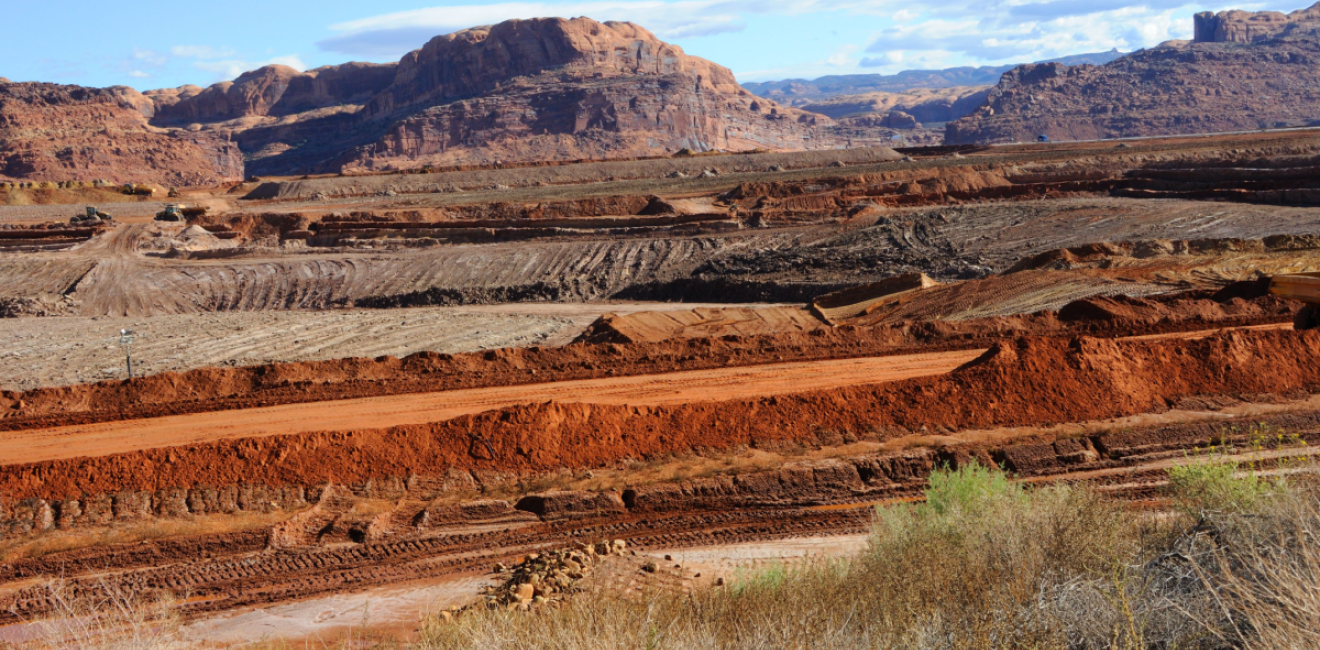Rick Tallman, Richard Luarkie and Morgan D. Bazilian
The world departed Dubai and the annual UN Climate Talks with a bold, new set of commitments to nuclear power. At the same time, geopolitical tensions are adding new restrictions to an already limited global Uranium supply chain. As a result, the spot price of Uranium is now over $100 per pound – the highest prices ever seen, outside the uranium bubble of 2007. With such economics, and a newly found bipartisan political will for American nuclear power, the U.S. is poised for a uranium mining boom once again.
As the inevitable debate ensues, what is often not appreciated is the essential need to gain support from our Native American communities from the very start and through the developments.
A report by the NRGI calculated that: “American Indian lands are estimated to include as much as 50 percent of US potential uranium reserves”. That amount could meet most (or all) of the future medium-term domestic demand growth. Thus, any attempt to reboot American uranium production that is not cast in full and willing partnership with sovereign tribal governments and their local communities will likely fail. Neither technology nor regulatory reform can overcome the sins of the past, which must be set straight before the industry can move forward.
It is hard to overstate the negative impact of uranium on the Native American community. In 1951, the first nuclear weapons field test took place on Shoshone land in Nevada. Over the next 40 years, almost a thousand more nuclear tests took place on Shoshone territory. Between 1951 and 1992 nuclear tests conducted on Shoshone land caused 620 kt of nuclear fallout, more than 40 Hiroshima bombs. The resulting health impacts on tribal populations are widespread and well documented, including the doubling of cancer rates within the Navajo Nation from the 1970s to the 1990s.
From 1950 to 1980, 96% of all U.S. defense-related uranium mines were located in the Navajo Nation. The remainder of U.S. defense-related uranium mines were located on lands of the Pueblo of Laguna, the Pueblo of Zuni, the Hualapai Tribe, the Tohono O'odham Nation, the Spokane Tribe of Indians, and the Ute Indian Tribe. These affected lands are located across what are now the states of Arizona, California, Colorado, Montana, North Dakota, New Mexico, Nevada, South Dakota, Texas, Utah, Washington and Wyoming. Almost all this uranium was purchased by the Atomic Energy Commission (AEC) and incorporated into the vast American nuclear weapons inventory of the cold war.
In response, the Radiation Exposure and Compensation Act (RECA) was established in 1990 to provide payment and apology for the decades of exposing workers and the public to harm from uranium extraction and above ground nuclear tests in the American West and Pacific Islands. One of the shortfalls of RECA is that it only compensated individuals and communities that participated in this industry between 1942 and 1971 in support of the nuclear weapons program. However, we know that there were several locations like the Pueblo of Laguna and Navajo Nation that had uranium mines still operating well after 1971. Unfortunately, post-1971 miners were statutorily ineligible for the benefits of RECA yet experienced many of the same complex health complications that their pre-1971 colleagues experienced. In fact, the biggest single radioactive release in American history occurred on Navajo land in 1979 with the collapse of a containment dam at UNC’s Church Rock uranium mill in New Mexico – a mill that fed civilian power reactors, not the nuclear arsenal.
The bottom line is that today there are still over 4,000 formerly producing and now Abandoned Uranium Mines (AUMs) that are still impacting tribal communities. Over 500 AUMs and four abandoned uranium mills still affect the Navajo Nation. Historical Lakota tribal territory hosts thousands of AUMs still awaiting cleanup. The continuing generational health impacts on tribal populations is widespread and well documented, while funding has fallen through the cracks. The federal cleanup effort is clearly wanting.
One example of the complex issues at hand is the proposed drilling outside of Bears Ears National Monument. The Monument was restored to its original size by President Biden after it was shrunk considerably in the Trump era, and a large-scale cleanup has been underway for years. New mining on the outskirts of Bears Ears has been proposed—and the resource appears significant. The area is sacred to several Tribes including the Navajo, Zuni, Hopi and Ute Mountain Ute. A new paradigm of engagement and revenue sharing is needed.
Clearly, a new approach to Uranium mining and processing in the U.S. is essential and should include five key tenants:
First, fully fund Cold War cleanup efforts. The U.S. Department of Energy's Office of Environmental Management was established to “address the nation's Cold War environmental legacy resulting from decades of nuclear weapons production and government-sponsored nuclear energy research”. Although progress continues in the reclamation of over 100 nuclear sites across the country, the most difficult sites continue to be hampered by a lack of resources. Funding must address the gap created by the termination of RECA and should be focused on Tribal nation building for a clean-energy future, not just Tribal nation repair of Cold War damages. The U.S. Army Corps of Engineers would be a smart choice to manage and contract a comprehensive federal AUM clean-up effort.
Second, since the American nuclear power industry was blunted in the 1980s, the country has fundamentally lost its collective expertise on the subject. A significant effort to expand graduate and undergraduate programs in nuclear engineering and associated sciences at American research universities is past due. The priority to receive such an education must be given first to tribal members - currently underrepresented in every related technical discipline. Ideally, the tribal sector from being the researched to being the researcher.
Third, much of the opposition to new mining and milling stems from the inevitable physical damage caused by activities like open pit mining, tailings disposal, wastewater treatment, subsidence, and the construction of surface facilities. Many new mining and milling technologies are being developed that could significantly reduce or eliminate much of this surface disruption. Priority funding support for such new technologies should be given, as is already allowed under federal law, to tribally- and native-owned companies and their affiliates. Technology research programs should integrate Traditional Ecological Knowledge (TEK) into development plans to achieve meaningful and actionable results.
Fourth, all U.S. nuclear development efforts should seek Free Prior and Informed Consent (FPIC) from affected tribal communities, in a manner similar to the Canadian model. Surely this international standard is warranted for the special case of nuclear development in the western U.S. New effective protocols should be developed jointly between industry and Tribal leaders, and not by federal regulators.
Fifth, every uranium mine and mill built in the U.S. should generate direct financial benefit to all affected tribal communities, regardless of current property ownership rights. New and innovative business structures should be explored and developed jointly between industry and affected communities. Maintaining a focus not only on mitigating environmental and public health issues, but on the economic development of the Tribes is key to success.
This is an historic opportunity for both atonement and demonstrate value to the Tribes at a time of great national urgency. Success will require focusing on the sovereignty and economic vibrancy of Native American tribes, while also ensuring the country’s legal and moral obligation to environment and public health.
Rick Tallman is a veteran of the US Army, and a longtime energy investor and developer. Richard Luarkie is a former Governor of the Pueblo of Laguna Tribe in New Mexico. Morgan Bazilian is the director of the Payne Institute for Public Policy at the Colorado School of Mines, and formerly lead energy specialist at the World Bank.
Contributor

Director of the Payne Institute and Professor at the Colorado School of Mines

Wahba Institute for Strategic Competition
The Wahba Institute for Strategic Competition works to shape conversations and inspire meaningful action to strengthen technology, trade, infrastructure, and energy as part of American economic and global leadership that benefits the nation and the world. Read more

Explore More
Browse Insights & Analysis
La esencia de la infraestructura global: perspectivas del líder de la industria Matt Harris

Debunking the Patient Capital Myth: The Reality of China’s Resource-Backed Lending Practices


